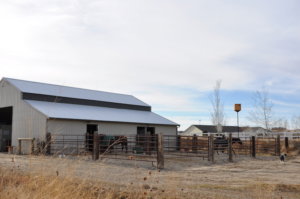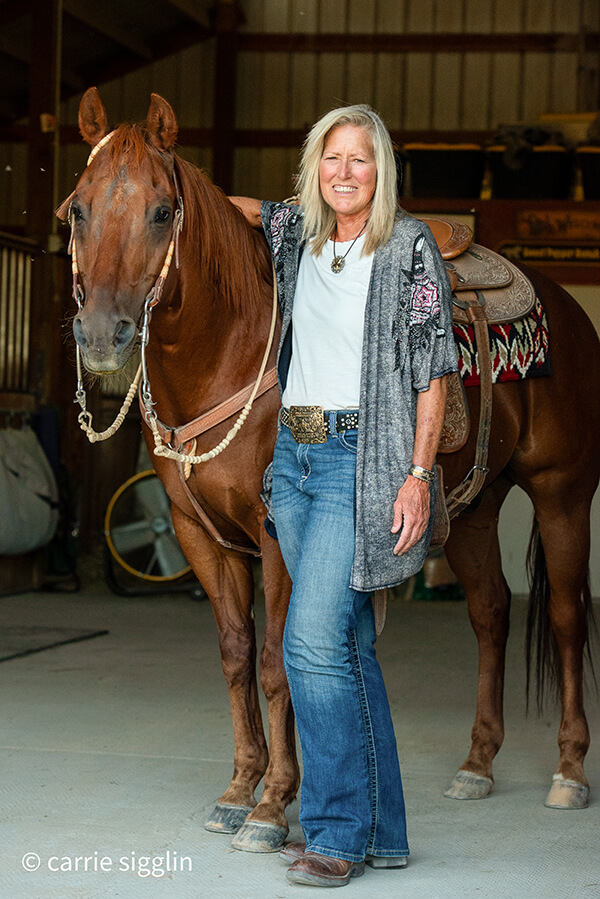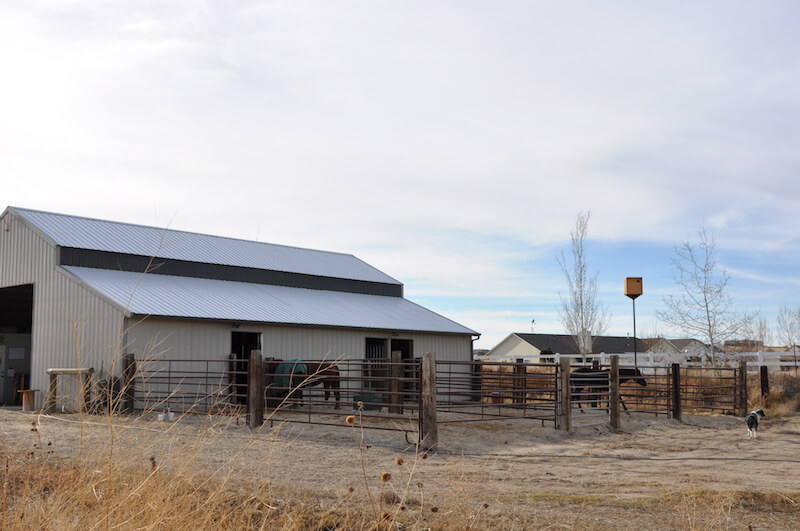Learn the “Golden Rules” for Pasture Management
by Alayne Blickle, Horses for Clean Water
If you are fortunate enough to have horse pasture winter is the time to baby it. It’s also important to realize that a good stand of grass is critical for environmental health. Grass roots hold valuable topsoil in place and prevent erosion. Grass plants minimize pollution by filtering out nutrients and sediments and reducing runoff. Here are the basics for winter horse pasture management:
Keep horses off saturated and rain soaked soils and dormant or frozen pasture plants. Soggy soils or dormant plants simply cannot survive continuous grazing and trampling in winter months. Compaction of soil makes water filtration and plant growth very difficult. In addition, when the soils are wet horse hooves act like plungers, loosening fine particles of precious topsoil to be washed away by rain. All of this hurts your pastures, diminishing pasture growth and vigor next spring and opening the door for weed invasions.
Never graze your pastures below 3 to 4 inches. This is called the Golden Rule of Pasture Management and I like to harp on it in all my classes because it’s important. A pasture plant always needs at least 3 to 4 inches of green, leafy material to manufacture food. If it doesn’t have that its health is compromised and you will have less forage production next summer along with more weeds. In addition, there are some serious horse health issues for horses on overgrazed pastures, such as risk for sand colic or ingesting too many simple carbohydrates which are stored in the bottom few inches of the plant.

Create a sacrifice area or winter paddock to be used during the winter months. A sacrifice area is a small enclosure such as a corral, run, or pen, which is meant to be your horse’s outdoor living quarters. It is called a sacrifice area because you are giving up the use of that small portion of land as a grassy area to benefit the rest of your pastures. Your horse should be confined to the sacrifice area during the winter and early spring when grass plants are dormant and soils are wet. In the summer, utilize the sacrifice area to keep pastures from becoming overgrazed (never below 3 or 4 inches) and to keep your horses from becoming overweight.
A sacrifice area should be located on high, well-drained ground far away from creeks, wetlands, ponds or other water bodies. Using a sacrifice area confines manure and urine to an area where you can manage it. Surround your sacrifice area by a grassy buffer or pasture to act as a filter for contaminated runoff. Using a footing such as hogfuel (wood chips) or crushed rock in a sacrifice area will help cut down on mud problems.
At Sweet Pepper Ranch in southwestern Idaho we have a seven acre hay field. Last winter I had hoped to graze my horses on small portions of it all through the winter, during dry periods when the soils weren’t wet or soggy. Unfortunately, even with seven acres of pasture, I was quickly at that critical 3 to 4 inches mark. Grass plants are dormant in the winter and simply aren’t re-growing. Even when you have a lot of pasture it’s very challenging trying to use it in the winter while still maintaining its integrity. It seems that during the winter the best option is still to utilize a sacrifice area.
Planning ahead for next year’s summer vacation or weekend getaway? Looking for a safe, easy-access overnight horse motel for your travels? Visit Alayne Blickle at Sweet Pepper Ranch in Nampa, Idaho, www.SweetPepperRanch.com, at her guest ranch, horse motel and B&B.
Published January 2013 Issue

Alayne Blickle began in the 1990’s as a pioneer in water conservation and natural resources conservation by creating the entrepreneurial consulting business, Horses for Clean Water, an award-winning internationally acclaimed education program that looks for horse-healthy, nature-based solutions to land management challenges. She continues this work today partnering with agencies, organizations, and horse owners throughout North America and worldwide. She is a regularly contributing writer and photojournalist to several equine publications.
Alayne lives with her horse trainer husband, Matt Livengood, in southwestern Idaho where they raise and train AQHA horses and mustangs on their eco-friendly horse ranch. Contact her through the Horses for Clean Water website or through their ranch website Sweet Pepper Ranch.
For more information contact Alayne at [email protected] or 206-909-0225.






